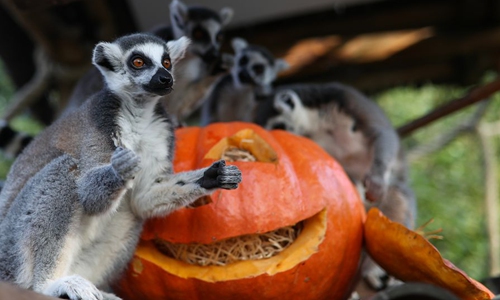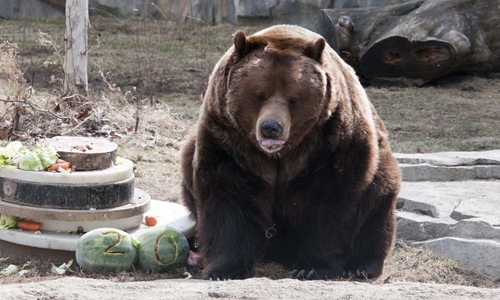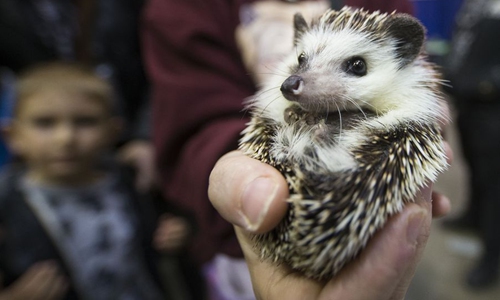HOME >> SCI-TECH
Hibernating animals lend clues to obesity treatment: study
Source:Xinhua Published: 2019/11/27 15:10:21

A squirrel is seen at Emirgan Park in Istanbul, Turkey, Nov. 25, 2019. (Xinhua/Xu Suhui)
Scientists in the United States have detected new genetic clues about hibernation, which may lead to better understanding and treatment of obesity and metabolic disorders.
The study published on Tuesday in the journal Cell Reports showed that hibernators may have evolved ways to "turn off" specific genetic elements controlling the activity of obesity genes compared to mammals that do not hibernate.
Hibernators like bear usually pack on massive weight during hibernation so they can survive months of slumber, but to scientists' surprise, they are as fit as ever after they reemerge.

Lemurs play with a pumpkin at Pairi Daiza zoo in Brugelette, Belgium, Oct. 31, 2019. A series of activities were held at the zoo to celebrate the Halloween, attracting numbers of locals and tourists. (Xinhua/Zhang Cheng)
The researchers from the University of Utah focused on four hibernating mammals found in diverse habitats worldwide: the ground squirrel, little brown bat, gray mouse lemur, and lesser Madagascar hedgehog tenrec.
After comparing their genomes, they concluded that those mammals had independently evolved short, non-coding DNA snippets called parallel accelerated regions, which are disproportionately located near genes linked to obesity in humans.
Then they examined genes involved in Prader-Willi Syndrome (PWS), a human genetic disorder that triggers insatiable appetite and leads to morbid obesity.

One of a pair of grizzly bears enjoys himself with food on his 20-year-old birthday party at the Brookfield Zoo, west suburb of Chicago, the United States, on March 21, 2015. (Xinhua/He Xianfeng)
It turns out that genes linked to PWS also have more hibernator accelerated regions than genes not associated with the syndrome. So they suggested those DNA snippets may invalidate genetic elements causing the metabolic disorder.
The newly discovered elements could improve our ability to learn how to evaluate and control obesity risks in humans by uncovering candidate master regulatory switches in the genome for controlling mammalian obesity, according to the researchers.

A little hedgehog is seen at the 2019 Canadian Pet Expo, one of the largest indoor pet festivals in Canada, in Toronto April 20, 2019. (Xinhua/Zou Zheng)
"Our results show that hibernator accelerated regions are enriched near genes linked to obesity in studies of hundreds of thousands of people, as well as near genes linked to a syndromic form of obesity," said the paper's co-author Elliot Ferris, a bioinformatician at the University of Utah.
The Utah researchers identified a total of 364 potential genetic elements that could have a role in regulating hibernation and obesity. They are currently testing those components in laboratory mice using gene-editing tool.